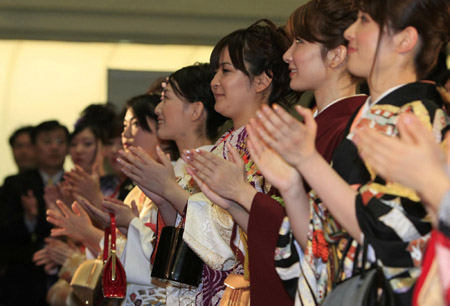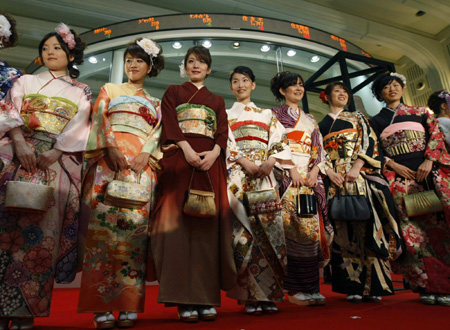Global Biz
Tokyo bourse targets speed with $140 mln Arrowhead
(Agencies)
Updated: 2010-01-04 14:59
 |
Large Medium Small |
TOKYO: The Tokyo Stock Exchange (TSE.UL) launched its $140 million "Arrowhead" system on Monday, as Asia's biggest bourse targets a dramatic increase in speed to revive its business and reputation.
|
|
Long derided as one of the world's slowest major exchanges, Tokyo will now be on par with global rivals such as New York and London. The system is supposed to process trades 600 times faster than previously and be able to handle much larger volumes.
In particular, analysts say the system should allow for more high-frequency trading, where algorithms are used to make thousands of trades in milliseconds, allowing firms to profit from tiny spreads and market imbalances.
"I think it has the potential to significantly reshape trading in not just Japan, but Asia," said Neil Katkov, head of Asia research for financial services consultancy Celent.
"There is the possibility the exchange will attract a lot more trading, new types of trading, and attention from new types of investors -- in particular, hedge funds."
About 60 percent of equity volume in the United States is from high-frequency trading, significantly higher than Japan. Just 10 percent of global financial firms with high-frequency businesses are active in Tokyo, according to Celent.
"With the new system being launched today we will do our best to make the exchange a global financial center," Atsushi Saito, the exchange's president, said at an opening ceremony in Tokyo.
Flanked by about 10 women clad in traditional Japanese kimono, Saito and other officials cracked open a barrel of Japanese sake to commemorate the launch.
|
 Kimono clad women applaud at the opening ceremony of the stock market and launching of the "Arrowhead" system at the headquarters of Tokyo Stock Exchange January 4, 2010. [Agencies] |
Small ticks
Developed by Japanese electronics conglomerate Fujitsu Ltd (6702.T), the 13 billion yen ($140 million) system runs on about 200 servers and is designed to process trades in 5 milliseconds, compared with 2 to 3 seconds previously.
The system is also designed to handle 46 million orders a day, compared with 7 million previously.
The Arrowhead system also reduces the "tick size," the smallest increment by which a stock can move. For instance, investors can now buy or sell shares of Sony Corp (6758.T) at 1 yen intervals, versus the previous tick size of 5 yen.
The reduction of the tick size comes after stiffer competition from alternative exchanges. The exchanges, known as proprietary trading systems, have drawn some business away from the TSE by offering smaller tick sizes as well as faster trades.
The TSE, which plans to go public after April 2010, is betting on Arrowhead after several embarrassing computer glitches tarnished its image with investors.
In December, the exchange was ordered to pay $120.5 million in damages to Mizuho Securities for a botched trade in 2005.
A 2006 accounting scandal at Livedoor Co sparked a massive sell-off of the Internet company. Unable to handle the rush of orders from panicked investors, the TSE had to curtail its trading hours for three months.








